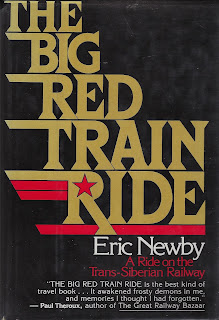Moonflower Murders is the sequel to an earlier book by Anthony Horowitz, Magpie Murders. In both books the main character is Susan Ryeland, and both feature the "book within a book" format. I did not review Magpie Murders and looking back, I can understand why. It was one of those books that is very difficult to review without revealing too much.
As Moonflower Murders begins, retired publisher Susan Ryeland is living with her boyfriend Andreas, running a small hotel that they own on the Greek island of Crete. She thought this would be an idyllic existence, but she is exhausted with the responsibilities and is having doubts about her relationship with Andreas.
Then Lawrence and Pauline Treherne visit their hotel, and tell Susan about a murder that happened eight years earlier in their hotel in Sussex. One of her authors, Alan Conway, visited the Treherne's hotel after the murder and used characters from the actual murder in his next book. Now, their daughter Cecily is missing, and this happened immediately after she read Conway's book and told them that she had discovered who was really responsible for the murder. They approach Susan because she edited the book and was responsible for it being published.
The Trehernes ask Susan to return to the UK, read the book, and see if she can figure out what has happened to Cecily and what clue she found related to the murder. This seems a bit extreme but they offer to pay her $10,000, which Susan could use to keep her small hotel afloat.
That summary of the premise for the book sounds complicated – and leaves a lot out – but it does make more sense when you read the book.
I liked everything about this book. I will confess to getting impatient with some parts of the story, and wondering why Susan takes so long to get to reading the book by Alan Conway (although she is of course already familiar with the story). But I was very happy about how Susan's story comes together in the end. And in Susan Ryeland, the author created a character that I cared about.
The book by Conway is placed almost at the middle of the book and is a complete mystery, complete with cover, copyright page, title page, and dedication page. It is a historical mystery, set in the 1950s, featuring a famous private detective somewhat like Hercule Poirot.
The "outer" story (set in the present) is a very good puzzle mystery and when it was solved, I felt like the clues and the plot supported the resolution. Sometimes in a puzzle mystery I end up feeling like the author has just thrown in a resolution almost out of the blue. I enjoyed the inner book, set in the 1950s, but I did not feel like it was as challenging as the main story. Together they worked very well, though, at least for me.
Although both Magpie Murders and Moonflower Murders share a main character and have a similar format, Horowitz labels them as standalone books on his website. I agree that this book can stand alone, but it does reveal some parts of Magpie Murders, if the reader wants to go back to read that one.
I first knew of Anthony Horowitz as one of the creators of the Midsomer Murders TV show and then later, Foyle's War. However he has done many other things. He is the author of a young adult spy fiction series which has recently been adapted as a television series. And he has written two Sherlock Holmes novels, a James Bond novel, and two other adult mysteries.
I am including this book in my submissions for the European Reading Challenge for Greece, since the book begins and ends in Greece, and that setting is lovingly described.
-----------------------------
Publisher: Harper, 2020
Length: 580 pages
Format: Hardcover
Setting: UK, Greece
Genre: Mystery
Source: I purchased this book.































